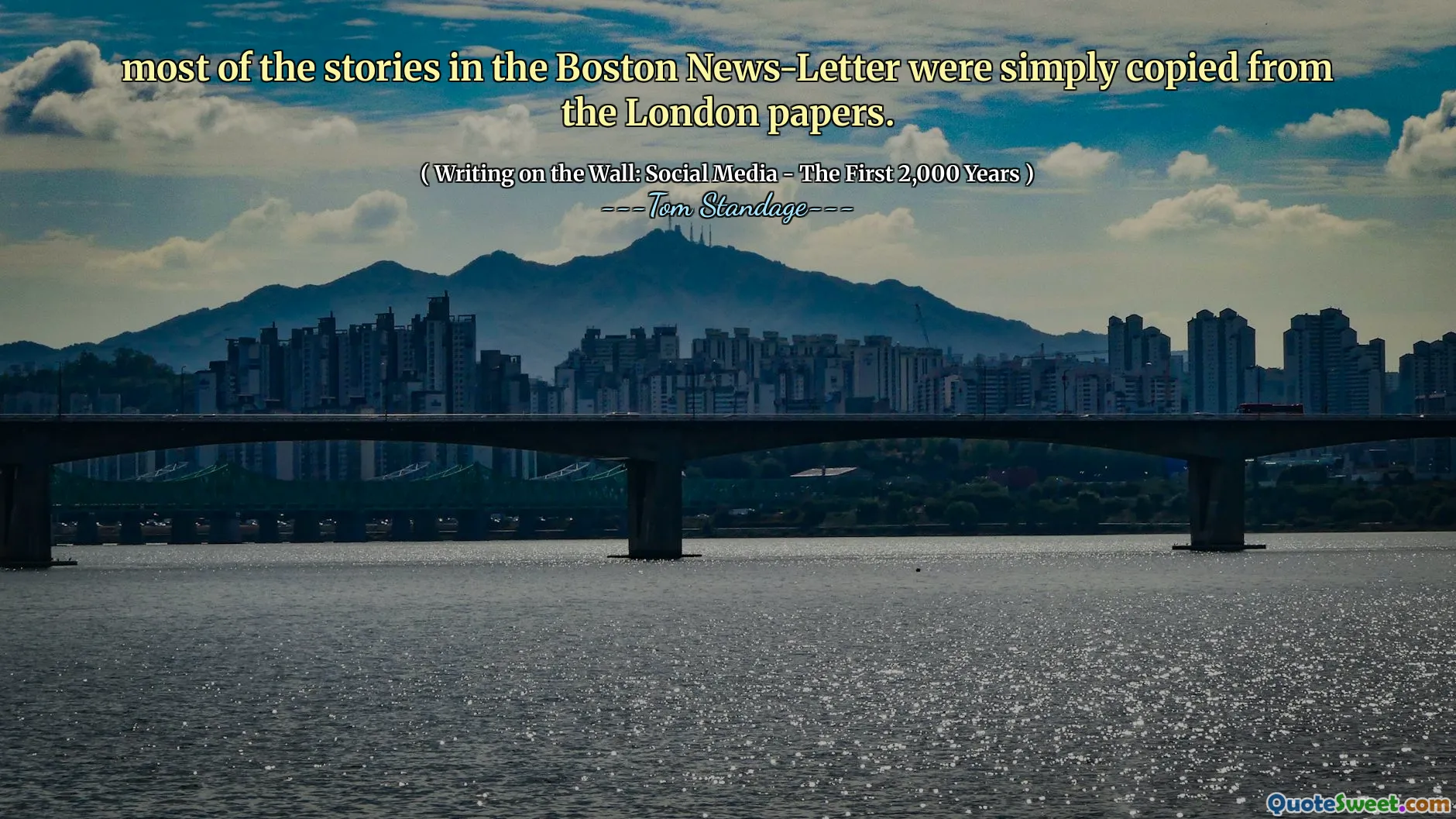
most of the stories in the Boston News-Letter were simply copied from the London papers.
The quote highlights a historical phenomenon that is as relevant today as it was centuries ago— the replication and adaptation of news across different contexts and cultures. This practice underscores the interconnectedness of ideas and the dissemination of information, which has been a cornerstone of media from its earliest days. In the 18th century, newspapers like the Boston News-Letter often relied on their London counterparts to fill their pages, reflecting the limitations of limited local sources and the desire to provide timely content to their readership. This mimicry was not necessarily negative; it was a practical response to the constraints faced by early printers and publishers. However, it also raises questions about originality, authenticity, and the shaping of public opinion. When news is copied, the fidelity of the information is maintained, but local nuances and perspectives might be lost or overlooked. From a broader perspective, this illustrates a persistent tension in journalism—the balance between sharing verified, authoritative information and maintaining a unique voice rooted in local or specific contexts. Given that news sharing and copying continue today in the era of digital media, the quote subtly underscores how the challenges of truth, ownership, and originality have persisted over centuries. The exercise of verifying and contextualizing information remains crucial. Understanding this historical backdrop can deepen our appreciation for the complex dynamics underpinning modern news dissemination, showing that some issues in journalism are truly timeless, echoing through the ages in different technologies and platforms.






